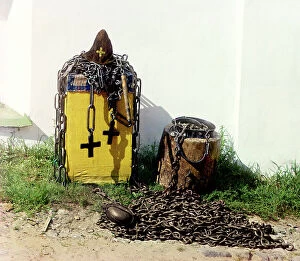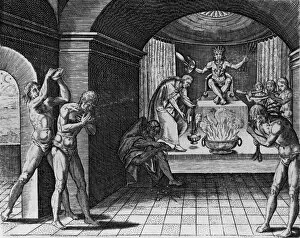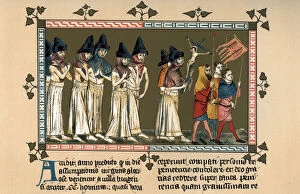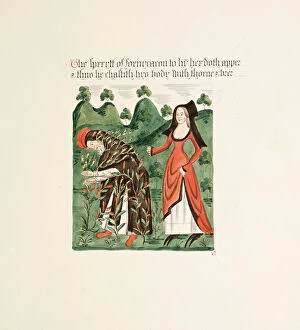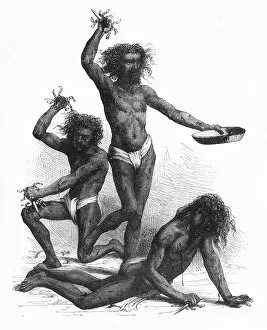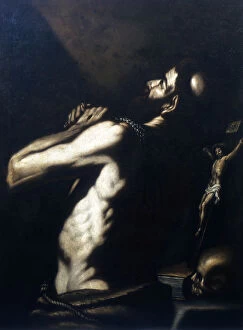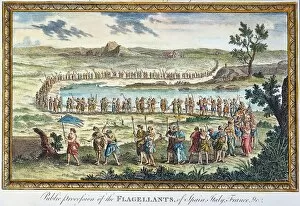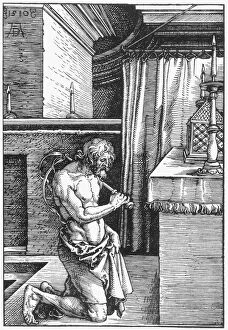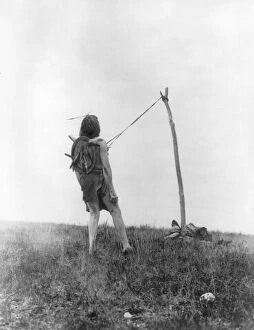Self Flagellation Collection
"Exploring the Ancient Ritual of Self Flagellation: A Journey through History and Faith" In this captivating caption
For sale as Licensed Images
Choose your image, Select your licence and Download the media
"Exploring the Ancient Ritual of Self Flagellation: A Journey through History and Faith" In this captivating caption, we delve into the intriguing practice of self flagellation, a ritualistic act that has spanned across different cultures and centuries. From the Mexican Indian religious service of penitence depicted in Americae (1602) to the vivid drawings by Robert Carlile showcasing The Antiquities of the Cathedral Church of Saint Mary, Carlisle (1795), we witness how this ancient tradition has left its mark on various civilizations. The Martyrdom of St. John (1498) immortalizes an intense moment where self-inflicted pain becomes synonymous with devotion. James Grant's depiction in Fakirs Wounding Themselves (c1891) transports us to another realm where spiritual enlightenment is sought through physical suffering. Meanwhile, Islamic fanaticism portrayed in a striking color lithograph reminds us that self-flagellation can also be influenced by religious fervor. Through Albrecht Durer's powerful artwork The Penitent (1510), we glimpse into the inner struggle faced by those seeking redemption through self-inflicted pain. The Flagellants at Doornik in 1349 (1903) takes us back to medieval times when large processions would traverse Spain as an expression of collective repentance. Louis Finson's portrayal of St Jerome from late 16th-early 17th century showcases how even revered figures engaged in acts of self-discipline for spiritual growth. In Hedwig Leaving Bloody Footprints Snow Self-Flagellation, we encounter a poignant image capturing one individual's personal journey towards absolution. As our exploration comes full circle, we are reminded once again that throughout history, individuals have turned to self flagellation as a means to connect with their faith or seek solace within themselves. Whether it be rooted in religion or driven by personal conviction, this age-old practice continues to fascinate and provoke contemplation.

